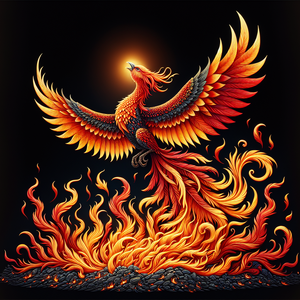Women in Space: Breaking Barriers at NASA

The history of women at NASA is rich with stories of courage, innovation, and perseverance. One of the most notable figures is Katherine Johnson, a mathematician whose calculations were critical to the success of the first U.S. manned spaceflights. Johnson's work not only aided in landing astronauts on the Moon but also served as a testament to the importance of diversity in problem-solving and innovation. Her story, recently popularized in the film Hidden Figures, exemplifies how women have historically contributed to NASA's mission despite facing significant societal and professional barriers. Another pioneering figure is Sally Ride, who became the first American woman in space in 1983. Ride's historic flight aboard the Space Shuttle Challenger opened doors for many women and girls, inspiring a generation to pursue careers in STEM (Science, Technology, Engineering, and Mathematics). Her legacy continues to motivate young women to aim for the stars while advocating for gender equality in science and technology. Ride's achievements were not only monumental for women but also highlighted the necessity of representation in science, pushing the envelope for future generations.
Current Workforce: Women Leading the Charge
Today, women are making significant strides within NASA's ranks, taking on leadership roles and spearheading critical projects. For instance, Dr. Ellen Ochoa, the first Hispanic woman in space, has not only contributed to various space missions but also served as the director of NASA's Johnson Space Center. Her leadership has been instrumental in mentoring the next generation of astronauts and engineers, demonstrating that women can excel in every facet of space exploration. Furthermore, initiatives like the Artemis program, aiming to land the first woman on the Moon, emphasize NASA's commitment to diversity and inclusion. This landmark initiative aims to not only send astronauts to the lunar surface but also to foster a new era of exploration that reflects the diverse makeup of the nation. By actively striving for inclusivity, NASA acknowledges that diverse perspectives fuel innovation and creativity, essential components for solving complex challenges in space exploration. Moreover, the establishment of various women-centric groups within NASA, such as the NASA Women of Color (WOC) initiative, highlights the growing recognition of the need for support networks. These groups focus on promoting diversity, providing mentorship, and celebrating the achievements of women of color in aerospace, further enriching NASA's culture.
Pathways for Aspiring Female Candidates
For young women aspiring to work at NASA, there are numerous pathways available to help them secure a place in this prestigious institution. Education plays a crucial role, and pursuing degrees in STEM fields is essential. Programs like NASA's Women in STEM initiative provide resources, mentorship, and scholarships to empower women at various educational stages. This initiative not only emphasizes the importance of academic qualifications but also fosters a supportive community for women interested in space and technology. Networking is equally important. Engaging with organizations such as the Society of Women Engineers (SWE) or the National Organization for Women in Aerospace can help aspiring candidates build connections with established professionals in the field. Additionally, attending conferences and events related to aerospace can provide invaluable opportunities to meet mentors and learn from their experiences, highlighting the importance of creating professional connections early in one's career. Mentorship programs also play a significant role in supporting women in their careers. NASA and various aerospace organizations often pair young women with experienced professionals who can offer guidance, support, and encouragement. These relationships can be instrumental in navigating the challenges of a career in aerospace and can help foster a sense of belonging in a traditionally male-dominated environment. Mentorship not only helps in professional development but also boosts confidence, which is crucial for women looking to excel in such competitive fields.
As we look to the future, it is clear that women will continue to play a vital role in advancing space exploration and research. From the pioneering accomplishments of women like Katherine Johnson and Sally Ride to the modern-day leaders at NASA, the impact of female professionals is profound and far-reaching. By celebrating these contributions and supporting the next generation of women in aerospace, we can ensure that the field remains diverse, innovative, and equipped to tackle the challenges that lie ahead. Aspiring female candidates should remember that their dreams are valid, their voices matter, and the stars are within reach. With the right support, education, and determination, the path to a successful career at NASA is not just a dream but a tangible goal within their grasp.
Aerospace Systems Engineer
NASA, Boeing, Lockheed Martin
Job Description
Design and analyze aerospace systems and components, ensuring they meet performance and safety standards.
Collaborate with cross-disciplinary teams to integrate various systems, such as propulsion and avionics.
Required skills include proficiency in CAD software, systems engineering processes, and a solid understanding of aerodynamics.
Astrophysicist
NASA, European Space Agency (ESA), universities
Job Description
Conduct research on celestial phenomena, including the study of stars, galaxies, and cosmic events to advance our understanding of the universe.
Utilize high-level mathematical models and data analysis software to interpret astronomical data and develop theories.
A PhD in astrophysics or a related field is typically required, along with strong analytical skills and experience with programming languages like Python or MATLAB.
Robotic Systems Engineer
NASA, SpaceX, Northrop Grumman
Job Description
Design and develop robotic systems for space exploration, including rovers and robotic arms for spacecraft.
Implement control algorithms and conduct testing to ensure robots operate effectively in the harsh conditions of space.
Requires a background in robotics, mechanical engineering, and programming, with specific knowledge of ROS (Robot Operating System) being a plus.
Planetary Geologist
NASA, Jet Propulsion Laboratory (JPL), research institutions
Job Description
Study the geology of planets, moons, and asteroids to understand their composition, structure, and history, contributing to missions like Mars exploration.
Analyze data collected from planetary missions and collaborate with scientists to interpret geological findings.
A degree in geology or planetary science is essential, along with experience in fieldwork and data interpretation using GIS (Geographic Information Systems).
Human Factors Engineer
NASA, Boeing, Raytheon Technologies
Job Description
Assess and improve the interaction between astronauts and spacecraft systems to enhance usability and safety during missions.
Conduct studies on human performance and behavior in extreme environments, applying principles of ergonomics and human psychology.
Requires expertise in human factors engineering, experience with usability testing, and knowledge of aerospace systems.


